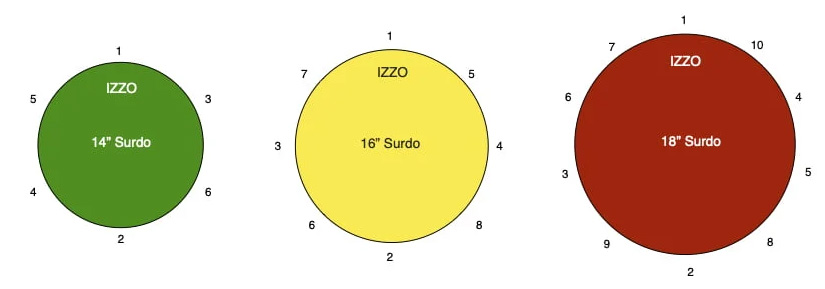Izzo ABS 10" pandeiro
- Durable and lightweight ABS plastic shell
- Fitted with a 10" Nylon head and 5 pairs of tin jingles
- Hard-wearing galvanized counter hoop with 6 hook tuners
- Authentic Brazilian instrument manufactured in famous Sao Paolo factory
- Available in 5 colours
Dealers - would you like your logo to appear here?
Please email sales@frederickhyde.com and we can help get this product on your site.
Buy from one of our Dealer Partners:
Product information
Specifications
Introducing the Izzo ABS 10" pandeiro
Just like a tambourine, the shallow pandeiro drum has metal jingles (or zils) attached to its shell. It’s played with the hand and can create all sorts of interesting sounds and fast rhythms to colour samba music.
This model has a single 10" white Nylon skin that can be tightened by using the supplied key to adjust the hook tuners. Unlike the larger drums in the Standard series, its shell is made from acrylonitrile butadiene styrene (ABS) which is very light and produces a crisp, bright sound. Also available is the 10" IZ3439-GR pandeiro featuring a shiny and eye-catching metallic drum head.
We are proud to be the sole importers for Izzo who have been manufacturing top quality instruments in Brazil for more than 60 years. Their famous Standard Senior series are the first choice for serious samba percussionists around the world.
Samba instrument care and maintenance
Izzo manufacture quality, authentic Brazilian samba drums and percussion which they have been doing for over 60 years. Their products are hugely popular in schools, colleges and with performing samba ensembles the world over. With the correct care and attention, these instruments should provide musical satisfaction and energetic performances for many years. Here are just a few tips to keep your samba gear in optimal condition.
Before and after playing
We recommend wiping the drums and beaters down with a damp cloth, as well as inspecting the tuning adjusters on each drum to check for any loose nuts. As a part of this process, you can also monitor the tension of the heads. If you find that an adjuster has come loose or a head seems slack, loosen off the entire head to thumb-tight and then re-tune using the included mini spanner. The best way to do this evenly is to tune opposite pairs, and the following diagram will give you the correct order in which to tune various sizes of surdo, caixa, repinique and tamborim:

The schematic above demonstrates the correct order for tightening the nuts onto the hooks of a Surdo. This way the tension is spread most evenly. Start with all the nuts just finger tight and then tighten each nut in turn by half a turn (starting with nut number 1, then 2, then 3 etc.). When you've tightened all the nuts, check the tuning. If a higher pitch is needed, repeat the process (again starting with nut number 1) by a quarter turn at a time and carry on until you're happy with the sound.
When tuning a set of three surdos (14", 16" and 18") start with the 18" and tighten it until the sound is nicely resonant (not "flat"). The tune the 16" until the pitch is higher than the 18". Finally tune the 14", again to a higher pitch than the 16".
If you're tuning more than one surdo of each size, tune all the 18" first, then all the 16" etc. Use the same order for tightening the nuts on the Caxia, Repeniques and Tamborims.











